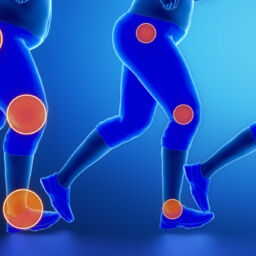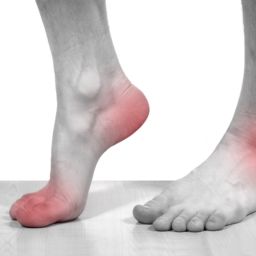
Podiatrists treat many sports injuries, and one of the most common athletic injuries a doctor sees in their office is a condition called shin splints. Shin splints, also known as medial tibial stress syndrome, is a condition in which the connective tissue that attaches your muscles to your bone becomes inflamed. This causes pain and tenderness when you touch the front of your shin- you may also feel sore when you are walking or running. See below for some tips on prevention, treatment and proactive measures.
How Do I Prevent Shin Splints?
There are many things you can do to help prevent shin splints.
- Evaluate your shoes- make sure they are in good condition and fit well. If you have flat feet, make an appointment with your Podiatrist to discuss orthotics to help hold your foot in the correct position while you exercise.
- Schedule stretching time into your exercise routine. Take time to stretch for 10 – 15 minutes before you begin any high-impact activity.
- Avoid overdoing it. Listen to your body and take breaks as needed. Gradually increase your exercise time. Also, consider cross-training and switching the type of exercise you do on a rotating basis.
- Consider adding strength training to your exercise regimen. This can assist with strengthening the muscles around your legs and ankles and help prevent future injury.
How Are Shin Splints Treated?
Shin splints usually heal on their own. It is important to refrain from running or participating in any high impact activity until you feel better. Take time to rest. You may benefit from switching your activity to a lower impact exercise, such as swimming or biking, while you rest and recover. In addition, ice is a natural anti-inflammatory. Spend time icing the area for 20 minutes every four hours, until the pain subsides. If the pain persists, you may take an anti-inflammatory if your doctor thinks this is safe for you.
When you are ready to return to running or your usual activities, see your sports Podiatrist for an orthotic evaluation. This can help to prevent future shin splints and other injuries. If pain does not improve after three days, it is important to see your Podiatrist to rule out other injuries. Your Podiatrist might take an x-ray and perform a gait and muscle strength analysis to help get you back on track.
What If I Keep Getting Shin Splints?
Some people suffer from recurrent shin splints. If this occurs, it is important to have a gait analysis from your Podiatrist to see if you will benefit from orthotics, a special insert to fit into your shoe. In addition, your Podiatrist may have you begin a physical therapy regimen to help stretch and strengthen your lower extremity muscles. Rarely, persistent shin splints can turn into a stress fracture, which is a small break in your bone. Your Podiatrist will discuss how to prevent this from happening.
As usual, the doctors at Certified Foot and Ankle Specialists are here to help you and discuss any concerns you may have. If you think you may have shin splints and they are not improving, make an appointment with one of our Podiatrists and we will be happy to help get you back on your feet, pain-free!




